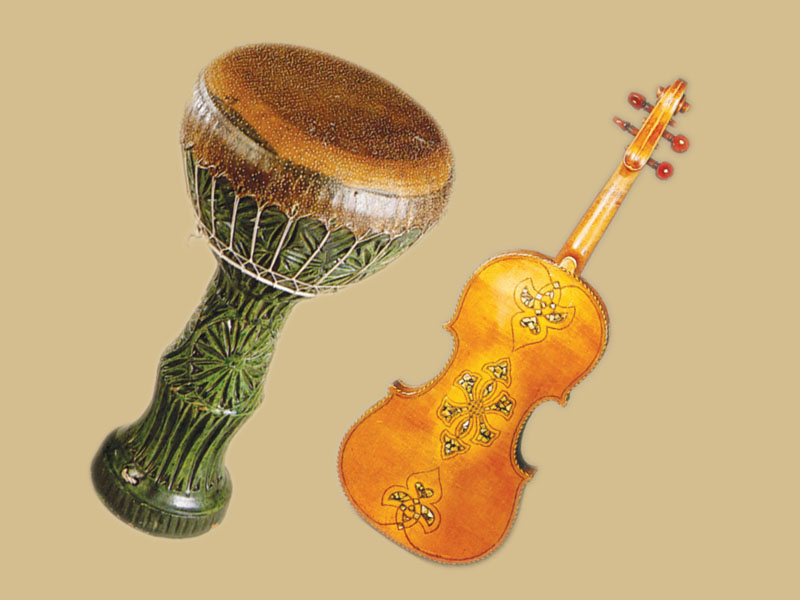The diversity of musical instruments
Issue 19

Yunus Sultani (Tunisia)
In ancient times, man discovered that some raw materials could be used to produce sound. Tree trunks could be fashioned into drums, he could produce whistles by making holes in bones, and he made other primitive instruments to produce sounds for a variety of purposes. Instruments were used to call people who were far away, to repel animals or to dispel the evil of natural phenomena.

Any tool that produces sound and that can be played can be considered a musical instrument. In ancient times, man used his hands and feet to establish a tempo, then he started to use percussion instruments, which gradually developed into drums, cymbals and tambourines. Wind instruments started as reeds and hollow bones, then man made panpipes from reeds of different sizes with one end open and the other closed. Panpipes evolved into flutes, oboes and other woodwind instruments with two open ends. At a later stage, these instruments were fashioned from wood and metals such as copper.
Man also softened twigs and used them as strings by fixing them to a box that amplified sound. This was the origin of stringed musical instruments, which developed into sophisticated instruments of different sizes and shapes. After he created musical instruments, man became aware of the value of music and he started to differentiate between the instruments and the music they created.
This paper studies the typology of musical instruments and classifies them by functionality (into string or wind instruments etc.), by materials, by geographic distribution (primarily Western or Eastern), and into popular or classical.







































































